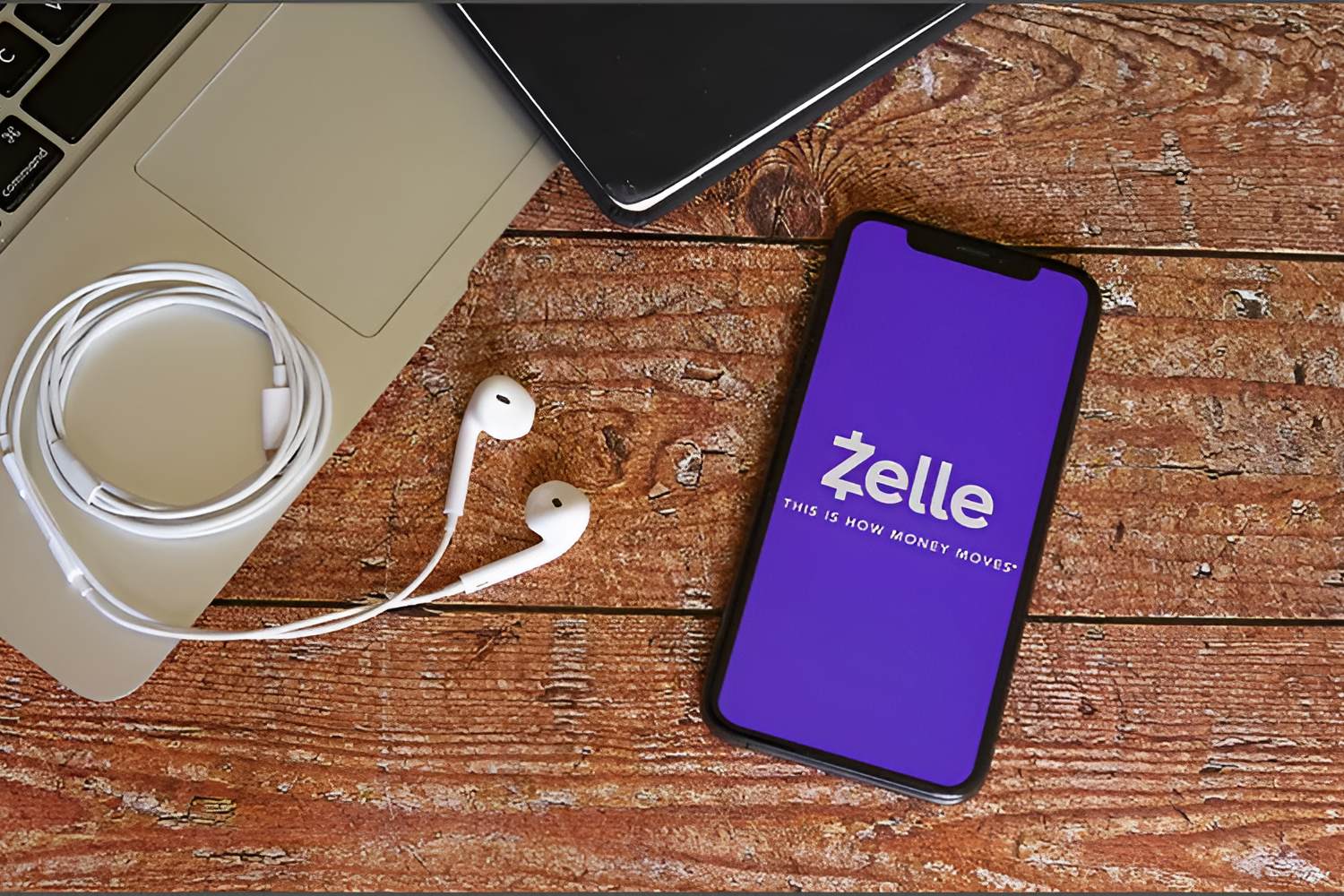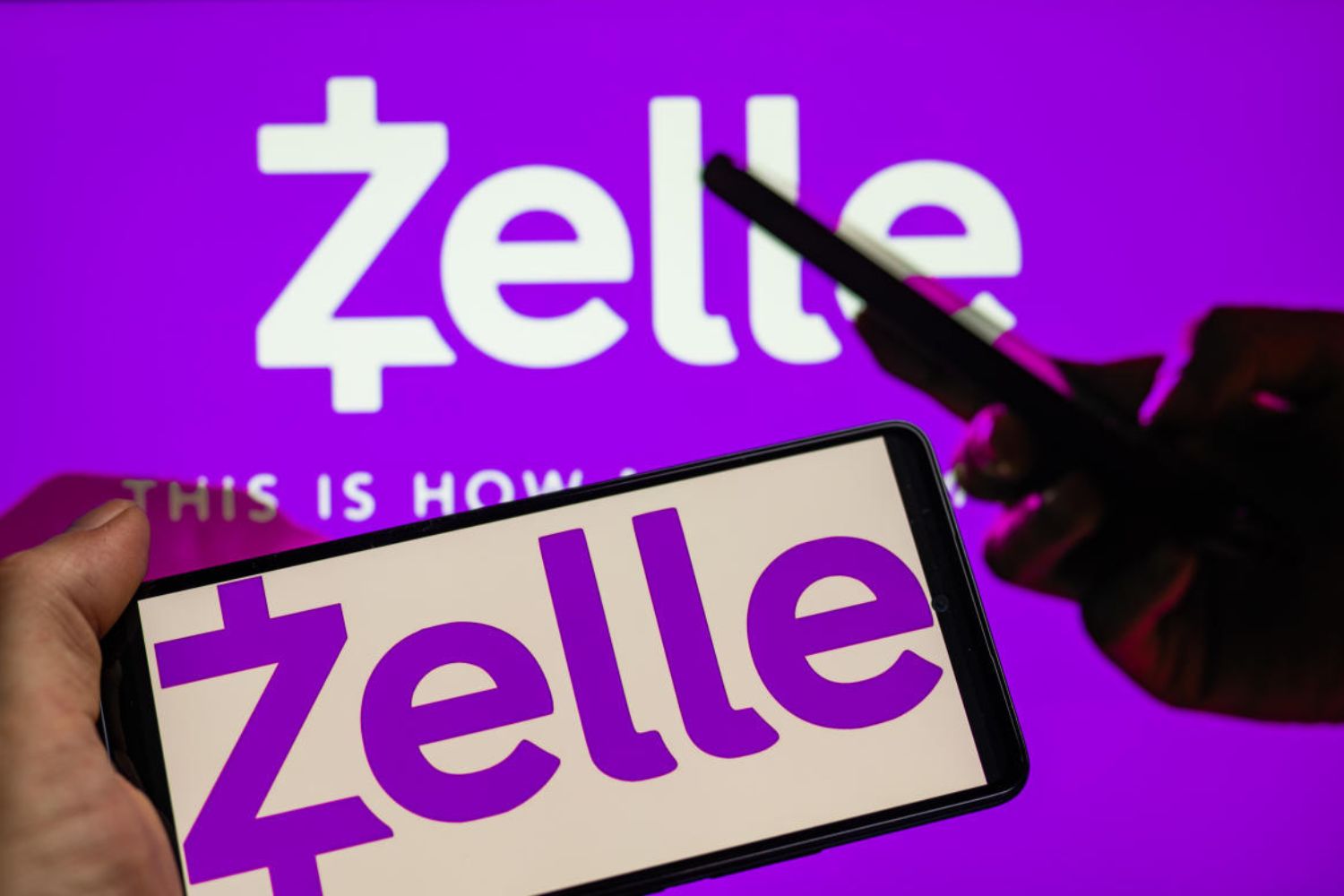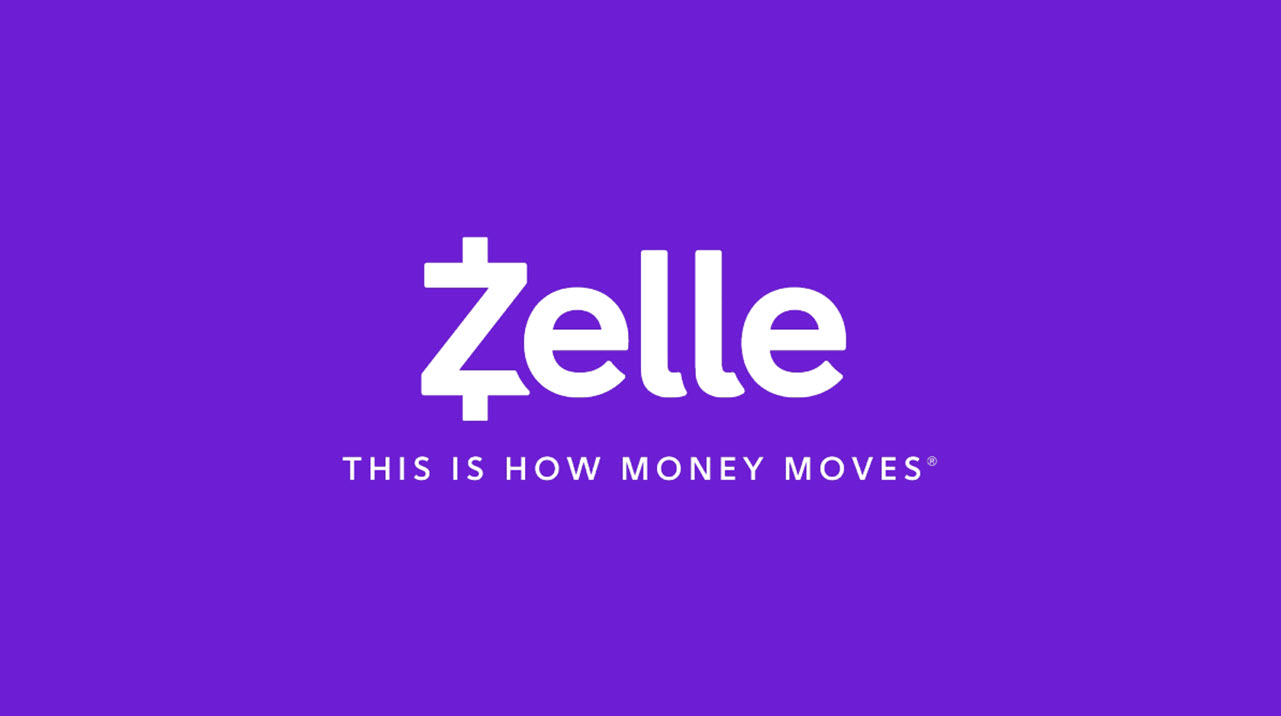What is Zelle?
Zelle is a popular digital payment platform that enables users to send and receive money quickly and securely. It is a convenient and fast way to transfer funds between friends, family, and even businesses. With Zelle, you can send money directly from your bank account to another person’s bank account, without the need for cash or checks.
Unlike other peer-to-peer payment apps, Zelle is integrated into the online and mobile banking platforms of major banks, making it easily accessible to millions of users. It offers a seamless user experience and eliminates the need for third-party payment processors.
One of the key advantages of Zelle is its real-time money transfer capability. Once a transfer is initiated, the recipient typically receives the funds within minutes, making it a great option for urgent payments or splitting expenses with friends.
Zelle is also known for its wide network of participating banks. Whether you bank with a large national institution or a smaller regional bank, chances are that Zelle is already available through your bank’s online and mobile banking services.
To use Zelle, you typically need to have a bank account and enroll in Zelle through your online or mobile banking platform. Once enrolled, you can start sending and receiving money to and from friends and family who are also using Zelle.
It’s important to note that Zelle is not a standalone app. You access and use it through your participating bank’s app or online banking platform. This integration with financial institutions ensures the security and legitimacy of transactions, as they are conducted within the secure environment of your bank’s infrastructure.
Overall, Zelle is a convenient, secure, and widely-used platform that allows you to send and receive money quickly and easily. It has become increasingly popular due to its simplicity and the ease with which it integrates into existing banking systems.
How does Zelle work?
Zelle works by leveraging the existing infrastructure of participating banks and credit unions to facilitate secure and speedy money transfers between individuals. Here’s a step-by-step overview of how Zelle operates:
- Enrollment: To use Zelle, you need to have a bank account with a participating financial institution. If your bank supports Zelle, you can typically enroll for the service through your online or mobile banking platform. The enrollment process may require you to provide your email address or phone number.
- Initiating a transfer: Once you are enrolled in Zelle, you can start sending money to other individuals who are also registered with Zelle. To initiate a transfer, you’ll need to navigate to the Zelle section within your bank’s app or website and enter the recipient’s email address or phone number.
- Recipient verification: When you provide the recipient’s contact information, Zelle checks to see if that person is enrolled in the service. If the recipient is not registered with Zelle, they will receive an invitation to enroll in order to receive the funds.
- Notification: Once the recipient is verified and the transfer is initiated, they will receive a notification via email or text message, depending on their chosen contact method. The notification will inform them that they have funds waiting to be claimed.
- Claiming the funds: To receive the transferred funds, the recipient must follow the instructions in the notification message. Typically, they will need to provide their bank account information where the funds will be deposited. Once they complete this step, the money will be transferred from your account to theirs within minutes.
- Confirmation: After the transfer is completed, both the sender and the recipient will receive a confirmation message, acknowledging the successful transaction.
It’s worth noting that Zelle enables users to send money directly from their bank accounts, which means there is no need to preload funds into a separate Zelle account. This direct bank-to-bank transfer process makes Zelle a convenient and hassle-free payment option.
Overall, Zelle simplifies the process of transferring money between individuals by leveraging the existing banking infrastructure. The integration with participating banks and credit unions ensures that transactions are secure and funds are transferred quickly.
Why does Zelle take 3 days?
One common question that arises when using Zelle is why it sometimes takes up to three days for the funds to be available in the recipient’s account. The answer lies in the underlying process used by Zelle to transfer the money.
Zelle uses the Automated Clearing House (ACH) network to facilitate the transfer of funds between banks. The ACH network is a secure and well-established system that connects financial institutions and enables the electronic transfer of money. While the ACH network is reliable, it does introduce a processing time that can lead to delays.
When you initiate a transfer through Zelle, the system generates an ACH transaction that instructs your bank to transfer the funds from your account to the recipient’s account. This ACH transaction is then submitted to the ACH network for processing.
The ACH network processes transactions in batches and settles them in a scheduled manner. This means that your transfer may not be immediately processed and delivered to the recipient’s bank. Instead, it joins a queue of other transactions that need to be processed and settled.
Furthermore, each bank has its own cut-off times for submitting transactions to the ACH network. If you initiate a Zelle transfer after your bank’s cut-off time, the transaction may not be processed until the following business day, adding to the overall processing time.
Once the recipient’s bank receives the ACH transaction, it needs to verify and post the funds to the recipient’s account. This verification and posting process can also take some time, as it may involve additional security checks and internal processing.
All these factors contribute to the potential delay of up to three days for the funds to be available in the recipient’s account. While this processing time may seem longer compared to other instant payment apps, it is important to remember that Zelle is leveraging the ACH network, which is designed for secure and reliable transfers.
In recent times, efforts have been made to expedite the ACH process and reduce the overall processing time for Zelle transactions. Some banks have implemented same-day ACH processing, which can speed up the availability of funds in certain cases. However, the three-day timeframe remains the standard for most Zelle transfers.
It’s worth mentioning that if you are consistently experiencing longer-than-expected delays with Zelle transactions, it’s recommended to reach out to your bank for further assistance.
In summary, the three-day processing time for Zelle transactions is primarily due to the nature of the ACH network and the batch processing involved. While it may not offer immediate transfers like some other payment apps, Zelle prioritizes security and reliability to ensure the funds are safely transferred between bank accounts.
The ACH Network
The Automated Clearing House (ACH) network is a system that facilitates electronic money transfers between financial institutions within the United States. It is a secure and reliable network that handles a wide range of transactions, including direct deposits, bill payments, and person-to-person transfers, such as those facilitated by Zelle.
The ACH network operates by processing transactions in batches rather than in real-time. When a transaction is initiated, it is collected along with other transactions and submitted to the ACH network for processing. These batches are then sorted and settled according to the network’s rules and schedules.
One of the key advantages of the ACH network is that it allows for cost-effective and efficient transfers of funds, especially for large volumes of transactions. By processing transactions in batches, the network reduces infrastructure costs and minimizes the strain on participating financial institutions.
The ACH network operates under the governance of NACHA (National Automated Clearing House Association), which sets the rules and regulations for ACH transactions. NACHA ensures that participating institutions follow strict security protocols and adhere to industry standards.
While the ACH network is highly reliable, the batch processing nature of the system introduces some processing time that can lead to delays in fund availability. This is why some Zelle transactions may take up to three days to be completed.
It’s important to note that the ACH network is continuously evolving to meet the demands of modern payments. In recent years, improvements have been made to expedite the processing time for ACH transactions. For example, same-day ACH processing has been introduced, allowing for faster transfer of funds in certain cases.
The ACH network also incorporates various security measures to protect the integrity of transactions. These measures include data encryption, multi-factor authentication, and robust fraud detection systems. The network’s security protocols ensure that funds are transferred securely between participating financial institutions.
Overall, the ACH network is a fundamental component of the financial infrastructure in the United States. It serves as the backbone for electronic money transfers, including those enabled by Zelle. While it may introduce some processing time, the ACH network provides a reliable, cost-effective, and secure means of transferring funds between banks.
The role of banks in Zelle transactions
Banks play a crucial role in facilitating Zelle transactions. As a participant in Zelle, your bank acts as the intermediary between you and the recipient, ensuring that the funds are securely transferred from your account to the recipient’s account. Here are the key responsibilities of banks in the Zelle transaction process:
Enrollment: Banks are responsible for enrolling their customers in Zelle. They integrate the Zelle service into their online and mobile banking platforms, allowing customers to easily enroll and access the Zelle features.
Transaction initiation: When you initiate a Zelle transaction through your bank’s app or website, the bank receives the necessary information and validates your identity to ensure a seamless and secure experience. The bank then generates the appropriate instructions for transferring the funds.
Risk assessment and fraud prevention: Banks have robust risk assessment and fraud prevention measures in place to mitigate the risks associated with Zelle transactions. They employ sophisticated algorithms and security protocols to detect and prevent fraudulent activities, protecting both the sender and the recipient from unauthorized transactions.
Settlement: Once the Zelle transaction is initiated, the bank needs to settle the transaction through the Automated Clearing House (ACH) network. This involves submitting the transaction to the ACH network for processing and ensuring the transfer of funds from your bank account to the recipient’s bank account.
Security and privacy: Banks prioritize the security and privacy of their customers’ financial information. They employ encryption technology and adhere to strict security protocols to ensure that Zelle transactions are conducted in a secure environment. Banks also comply with applicable privacy regulations to protect customer data.
Customer support: In the event of any issues or concerns related to Zelle transactions, banks provide customer support to address and resolve them. Whether it’s a problem with a transaction, unauthorized activity, or general inquiries about using Zelle, the customer support team at your bank is there to assist you.
Integration with Zelle network: Banks collaborate with Zelle to ensure seamless integration and communication between the Zelle network and their own banking infrastructure. This ensures that Zelle transactions align with the bank’s existing processes and workflows.
By actively participating in the Zelle platform, banks ensure that Zelle transactions are conducted securely, efficiently, and in accordance with the highest industry standards. Their involvement adds an additional layer of trust and reliability to the overall Zelle experience.
It’s important to note that while Zelle transactions are facilitated by banks, funds may not be immediately available to the recipient due to the processing time associated with the ACH network. This is why it may take up to three days for the recipient to receive the funds in their account.
In summary, banks play a critical role in Zelle transactions, from enrolling customers and initiating transactions to managing risk, ensuring security and privacy, and providing customer support. Their involvement adds credibility and trust to the Zelle platform, ensuring that money transfers are conducted safely and efficiently.
Security measures in place for Zelle transactions
Zelle takes security seriously and implements several measures to ensure the safety of transactions and protect the sensitive financial information of its users. Here are some of the key security measures in place for Zelle transactions:
Encryption: Zelle employs strong encryption protocols to secure the communication between users and the Zelle platform. Encryption ensures that the data transferred during a transaction is scrambled and unreadable to unauthorized parties, reducing the risk of interception and data breaches.
Two-Factor Authentication (2FA): To add an extra layer of security, Zelle supports two-factor authentication. This means that in addition to the login credentials (such as username and password), users may be required to provide a second form of authentication, such as a one-time code sent to their registered email or phone number, before completing certain actions or transactions.
Authentication and Verification: When users enroll in Zelle, their identity is authenticated by their bank. This validation process ensures that only legitimate account holders can use Zelle for money transfers. Additionally, when initiating a transaction, users are required to authenticate themselves through their banking credentials and potentially other security measures implemented by their bank.
Fraud Monitoring: Zelle has robust fraud monitoring systems in place to detect and prevent unauthorized or suspicious transactions. These systems use advanced algorithms to analyze transaction patterns, identify irregularities, and trigger security alerts when necessary. If fraudulent activity is suspected, Zelle may flag the transaction for further investigation or hold the funds until the issue is resolved.
Secure Banking Infrastructure: Zelle relies on the infrastructure and security measures of participating banks to ensure the secure transfer of funds. Banks, as trusted financial institutions, have their own security protocols in place to protect customer accounts and transactions. This collaboration between Zelle and the banks ensures that Zelle transactions occur within a secure and regulated environment.
Consumer Protection Policies: In the event of unauthorized transactions or other issues related to Zelle, users are protected by consumer protection policies implemented by their bank. These policies may allow users to dispute fraudulent transactions and provide avenues for resolution and reimbursement.
Education and Awareness: Zelle actively promotes security education and awareness among its users. It provides tips and resources on its website and through communication channels to help users identify and avoid common scams and phishing attempts. By keeping users informed about potential security risks and best practices for using Zelle, the platform aims to empower users to make safer transactions.
It is important for users to remain vigilant and take precautions to protect their personal and financial information when using Zelle. This includes using strong and unique passwords, avoiding sharing sensitive information with unknown individuals, and regularly reviewing transaction history for any unauthorized activity.
Overall, Zelle prioritizes the security and integrity of transactions by implementing encryption, two-factor authentication, identity verification, fraud monitoring, and collaborating with banks to ensure a secure banking infrastructure. By relying on these security measures and practicing safe online habits, users can confidently use Zelle for fast and secure money transfers.
Why does it seem like Zelle takes longer than other payment apps?
One common perception among users is that Zelle transactions take longer compared to other payment apps. While Zelle offers fast transfers in most cases, there are a few reasons why it may appear slower in certain situations. Here are some factors that contribute to this perception:
ACH Processing: Zelle utilizes the Automated Clearing House (ACH) network to transfer funds between participating banks. The ACH network processes transactions in batches at specific intervals, which means that there can be some delay before the funds are available in the recipient’s account. This batch processing results in a longer processing time compared to real-time payment apps that use different infrastructure and processing methods.
Bank Cut-off Times: Each bank has its own cut-off times for submitting transactions to the ACH network. If you initiate a Zelle transfer after your bank’s cut-off time, the transaction may not be processed until the next business day. This can contribute to the delay in funds availability and make it seem like the transaction takes longer.
Variations in Bank Processing: The speed of Zelle transactions can also depend on the internal processing time of the participating banks involved in the transfer. Some banks may have different processing times or additional security checks that affect the time it takes for the funds to be cleared and made available to the recipient.
Recipient Bank Policies: The policy and processing times of the recipient’s bank can also impact the perceived speed of Zelle transactions. If the recipient’s bank has a longer processing time or delays in making funds available, it can contribute to the overall impression of slower transfers.
Transaction Volume: During times of high transaction volume, such as peak banking hours or holidays, the ACH network can experience increased traffic. This can lead to longer processing times for all transactions, including Zelle transfers, as the network deals with the higher volume.
User Experience Expectations: Comparing Zelle to real-time payment apps that offer instant transfers can create the perception of longer transaction times. Apps like Venmo or PayPal have their own unique infrastructure and processes, allowing for faster transfers within their platforms. Therefore, when Zelle transactions take longer due to ACH processing, it can seem comparatively slower.
Despite these perceived delays, Zelle transactions are still generally faster than traditional check or wire transfers, which can take several days to process. While the timing may vary depending on the factors mentioned above, Zelle continues to improve its processing times and work with participating banks to optimize the speed of transfers.
It’s essential to keep in mind that Zelle prioritizes security and reliability. By utilizing the ACH network and collaborating with banks, Zelle ensures the safety and integrity of transactions. While it may not offer the instant transfers of some other payment apps, Zelle’s utilization of the ACH network and its focus on security make it a trusted platform for convenient money transfers.
Tips for faster Zelle transactions
While Zelle transactions generally complete within minutes, there are several tips you can follow to help ensure a faster and smoother experience. Here are some recommendations for faster Zelle transactions:
1. Ensure accurate recipient information: Double-check that you have entered the correct email address or phone number of the recipient when initiating a Zelle transfer. Providing accurate information reduces the chance of delays or failed transactions.
2. Verify recipient’s enrollment: Before sending a Zelle transfer, confirm that the recipient is enrolled in Zelle. If the recipient is not registered, they will need to enroll to receive the funds. Verifying enrollment can prevent potential issues and speed up the transaction process.
3. Initiate transfers during banking hours: Zelle transactions are processed through the ACH network, which operates during standard banking hours. Initiating transfers during these hours increases the likelihood of the transaction being processed promptly.
4. Be mindful of bank cut-off times: Different banks have varying cut-off times for submitting transactions to the ACH network. To ensure timely processing, initiate your Zelle transfer before your bank’s specified cut-off time. Otherwise, the transaction may be delayed until the next business day.
5. Opt for same-day ACH, if available: Some banks offer same-day ACH processing, allowing for faster funds availability. Check if your bank supports same-day ACH and take advantage of this feature when time is of the essence.
6. Stay vigilant against fraud: While security measures are in place, it’s important to stay alert to potential scams and phishing attempts. Protect your Zelle account by using unique, strong passwords, enabling two-factor authentication, and avoiding sharing sensitive information with unknown individuals.
7. Keep your contact information up to date: Ensure that your email address and phone number registered with your bank are current. Your bank and Zelle may use these contact details for important notifications related to your transactions.
8. Leverage customer support: If you encounter any issues or have questions regarding your Zelle transactions, reach out to your bank’s customer support. They can provide assistance, investigate any potential problems, and offer guidance for smoother future transactions.
9. Understand transaction limits: Familiarize yourself with your bank’s transaction limits for Zelle transfers. Transferring larger amounts may require additional verification or take longer for processing. Knowing these limits can help you plan accordingly for faster transactions.
By following these tips, you can increase the speed and efficiency of your Zelle transactions. While some factors, such as the ACH network processing times, are beyond your control, being proactive and mindful of the recommended practices can help ensure a smoother experience with Zelle.
Conclusion
Zelle is a widely used and convenient platform for sending and receiving money quickly and securely. By leveraging the existing infrastructure of participating banks and the ACH network, Zelle provides a seamless user experience and eliminates the need for third-party payment processors.
While Zelle transactions typically complete within minutes, it may seem like Zelle takes longer compared to other payment apps due to the nature of the ACH network and batch processing. However, it’s important to note that Zelle prioritizes security and reliability, leveraging the trusted infrastructure of banks.
Throughout the Zelle transaction process, banks play a crucial role in facilitating transfers and ensuring the security and integrity of transactions. They enroll users in Zelle, authenticate identities, employ fraud monitoring systems, and provide customer support.
Several security measures are in place to protect Zelle transactions, including encryption, two-factor authentication, risk assessment, and fraud prevention protocols. By partnering with participating banks, Zelle ensures that transactions occur within a secure banking environment.
While the ACH network processing times may introduce a delay in fund availability, Zelle continues to work on optimizing processing times and offers same-day ACH options for faster transfers. It’s important for users to manage their expectations and understand that the three-day timeframe for funds availability is part of the standard ACH processing.
To enhance the speed and efficiency of Zelle transactions, users can follow some tips such as double-checking recipient information, initiating transfers during banking hours, being aware of bank cut-off times, and utilizing same-day ACH if available. Staying vigilant against fraud, keeping contact information up to date, and leveraging customer support are additional helpful practices.
In summary, while Zelle may seem slower compared to other payment apps in certain situations, it offers a reliable and secure platform for transferring money between bank accounts. By understanding the underlying processes and following best practices, users can enjoy the benefits of fast and convenient money transfers with Zelle.

























